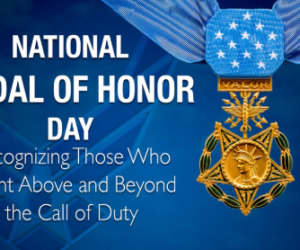
This child from Sudan is not wearing a necklace. The men who raped her slit her throat over and over.
Dateline: RAPE-WORLD: Today and Every Day In Our World.
–Raped by the government militia,
–raped by criminal civilians who copy the government militia,
–raped psychologically by their family ethos afterward,
–raped emotionally by those in news media who would rather cover the petty whinings of the many who are not under siege–
–and raped by the exoneration of thug-leaders who do not immediately rein in the methodology of rape, but rather see it as a low-cost weaponry available to all his soldiers, weaponry that doesnt cost the thug at the top–one red cent.
I grew up in a family of refugees and “ethnically cleansed” (what a misnomer that) tribal people from E. Eu, WWII. The following article rings loudly true in all respects of women and children being used as fodder, offal and meat by those who have lost their minds and heart in war.
The components of vile heart and evil rape of ALL in the sight lines of those intent on doing evil, the purposeful intent being to starve the refugees and those who have fled, the purposeful terrorism to murder babies in their mothers’ wombs, the purposeful murders after rapes of those most precious to the elders… all this was in my poor war-torn, deeply traumatized refugee family too. Often, pregnancies, gross malnutrition, terrible injuries to mouths, teeth, neck, trunk, limbs, face and back, and often enough, disease also, were the results of rape all in one person. Not either or. All.
And then, as now, it took decades for those raped so often and often so precipitiously, to speak it out. And that public speaking out, did not come from the generations who suffered it so deeply and over and over. It came from us, out loud, their progeny to whom in their unguarded and agony moments, all the facts they felt so shamed by, poured out in words so jagged, in tears so acid, in heart so screaming-weeping, it burnt us in the eyes, in the spirit, it branded us. We dont forget. We wont. We cant.
Many of us thereby became our suffering elders’ memorial candles, we growing up, often entreated and often intruded upon ourselves by strangers, passers-through, right here growing up on our own roads and in our own fields. The sheer insanity of our elders not being able to protect their own in war, nor us pretty young children in times of peace, we, their own precious cargo, in this new country… and being unable to stop the dark appetites, not of passion, but of demeanment of innocents that is egregiously exciting to the person perpetrating such.
Thus and still, we know the subject face-to-face through four generations of rape and intrusion… far too well, and yet, many of us, as memorial candles, resolved to keep all the facts of the nature and strategies of such evil above the waterline for the rest of our lives, to record it, to write it, to make sure on paper, in 1s and 0s, it remains above the waterline even where and when it appears the majority of the world would wish all bloody records of such harms would disappear into oblivion… instead of to learn from, to know down to the bones, and to find ways to unleash the redemptive with regard to this un-erasable inhumanity used to scar-brand others for life.
In the following chapter, we can see the archetype of rape, the intention to mark another human being with one’s own vile imprint for life, I think. It is the same, over and over the methods of scar-branding others are the same, whether it was the Arawak first meeting the greed-sotted and gristle-lusting Columbus and buddy-thugs, or whether Bosnia, former Jugoslavia, the Hutu- Tutsis, the gold fields near summering camps, the slave labor camps in any war over the centuries.
It is the same… Rape is the same: the archetype of Rape is followed step by step, in all its inhuman slavering, The Way of Rape is real, clear cut, stylized, predictable in its tactics.
Once rape is experienced and not being able to flee the environs in which mass rape is unleashed, one learns, the steps to dehumanizing are the same everywhere. There is no originality to it, only predictable and ancient forms of brutality.
I’m reminded of a teacher we had in our backwoods schoolroom, a man from the east who long after we were grown, we realized he loathed having been assigned to a school of hick children. Handing out grades to us young ones crammed two and three to a desk, he would always say about our grades, “Read ’em and weep.” I didnt realize his scorn in that. I thought he meant something was very sad about us all, and that we should cry about it inconsolably.
I find, in public reactions, often, similar… scorn for the right NOW suffering of others who are not oneself. Yet, I think the child spirit has the right reaction… there are some things, some ‘grades’ given out for certain people’s failures as human beings who cut rather than care about others actively– that one ought weep over that state of the souls of some, one ought weep inconsolably and then as well go forward with blood in the eye and inestimably love in the heart, and within one’s reach, take action— not just words– to help mediate the inhumane
… to not only free oneself from the disaffected stake through one’s own heart, but to in whatever way within our reach, alone or with others already setting their shoulders against the wheel, also freeing those who have raped, those whose reptilian brains urge them to continue to enter the bodies of innocent others right up to the heartline…
to free as many of those who perpetrate, predate on others, those who have buildt one of the most deadly prisons a human can ever build for oneself: The repetitive intense arousal to be found– nay, to be craved– via evil acts… There’s a saying amongst the old believers in my family, the RAPED old believers in my family… that evil acts can cause a person with a self-murdered soul to feel a false form of being alive… a lie that will never allow them true life until they tell the living truth about what they did, what they have done.
It is prayer I carry about those who do such harm to innocent others: that they themselves will be raped, scarred with the radiant truth, branded with the truth… their only hope for rejoining humanity ever, and more ever.
This article was posted by Michele Lent Hirsch, and first published on February 8, 2012, ©2012, all rights reserved. I hope particularly, you will see the parts about rape as strategy and tactics. Those are ancient strategies, ancient tactics, ironically also, the way to murder one’s own soul by those who bring such premeditated and impulsively enacted harms onto others.
Here is the step by step of the Archetype of Rape; an archetype is a universal idea that rises from the unconscious into consciousness and takes hold and carries either great positive or negative numinousity when beheld by some humans, causing them sometimes with huge inflation of ego, to identify with the dark shadow of the archetype, which carries intention and feeling toned ideas, but is not human. If one becomes possessed by such inhuman and dark archtype, it is said psychologically, the person who once was, is no longer.
———–
DARFUR-SUDAN
In March 2003, after decades of tension, fighting erupted in Sudan’s western Darfur region between Sudanese government forces and rebel groups such as the Sudanese Liberation Army and the Justice and Equality Movement. Over the next few months, tens of thousands of Darfuris fled. Government troops and allied militia forces, called the Janjaweed, attacked villages and internally displaced persons (IDP) camps, systematically raped women, and murdered whole communities. To ensure mass destruction, forces burned homes and poisoned water wells. Some analysts consider the conflict to be an attempt by the Arab-identifying majority to destroy the “African” minority.
Meanwhile, other areas of Sudan have experienced unrest. After much tension between the north and south of the country, the people of southern Sudan voted in January 2011 to secede. In July 2011, South Sudan officially declared its independence as a new nation. Political analysts believe the Sudanese government had hoped that international attention would be diverted by peace talks with former rebels in South Sudan, allowing it to quell the Darfur rebel movements with quick, systematic military action. But although the nascent country may have edged its way into headlines, atrocities continue elsewhere. And compared with other areas of Sudan, Darfur suffers from the most systematic rape, due to the ease with which soldiers can target women in Darfur’s IDP camps.
Sudan’s government has used profits from oil wealth in various parts of the country, including areas in the Nuba Mountains and in South Sudan, to fund its military attacks in Darfur. “Oil revenues account for a majority of Sudanese government income, and therefore are instrumental in financing genocide,” according to a 2006 report from Yale University. While the mass murder and rape in Darfur has been funded largely from oil in other Sudanese regions, Bloomberg reports that oil has recently been tapped in Darfur itself, with additional exploration studies being carried out in other parts of Sudan. In 2009, the International Criminal Court (ICC) issued an arrest warrant for Sudanese President Omar al-Bashir for war crimes, making al-Bashir the first sitting head of state to have a warrant against him by the court.
How Sexualized Violence is Used as a Weapon of War
To destroy communities and families: Rape is used to terrorize and break down social structures, causing people to flee their homes and surrounding areas and women to be scorned by their families. Following rape, women are also sometimes made to build their own huts outside the “family compound,” according to a report from Médecins Sans Frontières.
To degrade and terrorize women: This is part and parcel of destroying communities, families, and social structures. Rape is meant to leave a permanent mark on women, tearing them from a sense of security, even within their own bodies.
For ethnic cleansing: There have been many reports of ethnic slurs being made during rape as well as stated intentions to impregnate women and force “mixed” babies.
The U.N. defines ethnic cleansing as “a purposeful policy designed by one ethnic or religious group to remove by violent and terror-inspiring means the civilian population of another ethnic or religious group from certain geographic areas.” We are using the term here because ethnic cleansing makes women subject not only to outright murder, but also controls the threat of their bodies as the means of reproduction. For instance, women have been raped in order to occupy “inferior” wombs with “superior” sperm, or forced to have abortions or sterilizations (as have men of “inferior” groups) in order to end future reproduction. In some conflicts, women are also subject to the sex-specific political torture of forcing them to bear the child of their torturer in order to break their will.
To increase food insecurity: At most IDP camps in Darfur, rations do not provide enough to eat. But when women try to plant crops near the camps so as not to rely solely on international aid—or, more commonly, when they search for firewood near the camps—they are raped and thereby prevented from cultivating or even cooking their own sources of food. Some NGOs have tried to improve policing and IDP camp cooking supplies, but sexualized violence continues to destabilize access to food.
Patterns of Violence
Primarily, Sudanese government forces and the Janjaweed paramilitary commit rape, according to United to End Genocide, a Washington-based organization dedicated to ending genocide worldwide, and other groups. Therefore, those who identify as being of Arab descent are perpetrating sexualized violence against those considered non-Arab or “African.”
A high percentage of reported rapes take place while women and girls are on long walks to procure firewood and water to bring back to their refugee camps or villages. It is considered safer for women to go out at night as they are actually more likely to be targeted while searching for wood during daylight hours. (Militias usually shoot men dead if they attempt to leave the camps.) This is such a significant problem that some organizations have tried to create a lesser need for firewood and water through more efficient wood-burning stoves and better water pumps at IDP camps. A March 2005 Médecins Sans Frontières report states that 82 percent of the women who came to them for treatment after being raped reported that the assault took place while they were “pursuing their ordinary daily activities” such as gathering wood or water.
Rather than kill women after raping them, many of the rapists purposely keep women alive following the ordeal, even marking them with wounds, knowing that women will not be accepted by their families or considered “viable” to marry; however, women who do not comply are usually killed.
Some men are forced to commit rape by their superiors. While there are a few soldiers who report that they tried to resist, they can be killed if they do not follow orders.Numbers
Experts are extremely reluctant to provide estimates of the number of women and girls raped—even more so than with other regions in conflict. No number other than “thousands” is available at this time. According to United to End Genocide, the main reason this already underreported crime is especially underreported in Sudan is that women have learned the hard way not to speak out: The government-sanctioned perpetrator often strikes again after a woman goes public. However, the organization says that rape was, and continues to be, much more of a problem in Darfur than in other regions of Sudan and now South Sudan. Whereas rape is used sometimes when forces invade a village, its systematic use is largely limited to the areas around refugee/IDP camps in Darfur. In South Sudan, displaced persons tend to flee into the bush; there aren’t camps around in which to target women. And according to a 2009 U.N. report, sexualized violence in Darfur has spilled over into Chad, where there are additional refugee camps.
Cultural Gender Attitudes
United to End Genocide’s Shannon Orcutt describes a Darfuri woman she works with who told her that women used to be “looked to as leaders within the community”—and that this is why women are being especially targeted. Orcutt says that women are now excluded from almost all peace processes, and that this marginalization comes not from the communities but from outside humanitarian and peace-building groups that go to the men for information and leadership.
Orcutt adds that many Darfuris she has interviewed have told her that rape didn’t really occur before the conflict, although it’s possible that this is a rosy view of the past. And, says Orcutt, one woman working for UNAMID, an African Union/U.N. hybrid operation, reported that young teenagers of Arab descent “would target even young African-descent women just because they had seen this before” in the current conflict. This sort of sexualized violence—aimed at particular ethnic groups or otherwise—seemingly did not happen to the same extent before.
Witness
Rape victims must withstand threats of violence from their own families, as seen in this testimony from a May 2009 Physicians for Human Rights report called “Nowhere to Turn”:
“When I got back to my brother’s house, I told him what had happened. My brother said to me, ‘If you stay in my house, I’m going to shoot you (to kill you).’ After that, I was afraid and I came to Farchana. My mother doesn’t speak to me.”
The violence of rape can force a pregnant woman’s body to abort her baby. At the time of a attack on one woman, which was reported by Physicians for Human Rights, the woman was eight months’ pregnant. From the same report:“I was raped vaginally by three men in front of my children. The children were forced to witness the rape.… One of the Janjaweed pushed me to the ground. He forced my clothes off and raped me. When they shot my father, they saw I was a little girl. I did not have any energy or force against them. They used me. I started bleeding. It was so painful. I could not stand up.
“I was really suffering. The next day I gave birth to a dead baby.”
This testimony of a Sudanese man in Darfur was recounted in a 2006 United Nations Population Fund briefing paper:“In February 2004, I abandoned my house because of the conflict. I met six Arabs in the bush. I wanted to take my spear and defend my family, but they threatened me with a weapon and I had to stop. The six men raped my daughter, who is 25 years old, in front of me, my wife, and young children.”
One woman from Darfur told Amnesty International in 2004:“I was with another woman, Aziza, aged 18, who had her stomach slit on the night we were abducted. She was pregnant and was killed and they said, ‘It is the child of an enemy.’”
FalloutRape survivors are stigmatized and sometimes so shunned by their relatives and communities that they are forced to build their own huts and live separately from their families, according to a 2005 report by Médecins Sans Frontières. Physicians for Human Rights reported in 2009 that some relatives even threaten to kill survivors.
Women suffered and continue to suffer forced pregnancies due to rape. A 2004 Amnesty International report cited a commonly held belief in Sudan that causes further pain to women who had been raped: Many Sudanese believe unwanted sex cannot make a woman pregnant. So if she becomes pregnant, it was not through rape. If she is unmarried and chooses to rejoin her community, the community will not accept her child. Therefore, to go home, she must reject her own child.
In addition, pregnancy outside of marriage is illegal in Darfur, leading to the arrest of women who become pregnant through rape, according to Médicins Sans Frontières.Along with all the other problems that come with raising a child born of sexualized violence, these women face raising a child that looks “light-skinned” or “Arab,” thus marking them as products of rape. One PBS “News Hour” report tells of a pregnant victim who “starved herself to death rather than face the shame of people knowing what happened to her.”
Sexualized violence has become more prevalent not just in Darfur but in Chad, where many Darfuris have fled in the past few years. Women who have been raped or vulnerable to rape in Sudan are sometimes attacked once more in and around camps in the neighboring nation. Though rape is largely perpetrated by government soldiers and their proxy militia, the Janjaweed, rape is now becoming more prevalent among civilians.
Because women are often targeted while procuring water, firewood for cooking fuel, and space to cultivate crops near refugee camps, rape increases food insecurity for women and their families.
Experts have been unable to determine clearly whether HIV rates have risen due to rape in conflict. A recent epidemiological study found that there is “insufficient evidence” that HIV transmission increases either during conflict or in refugee populations. Published in The Lancet in 2007, the study analyzed data from Democratic Republic of Congo, southern Sudan, Rwanda, Uganda, Sierra Leone, Somalia, and Burundi. Researchers report that although rape may increase an individual survivor’s risk of contracting disease, there are not enough reliable data to show that systematic rape raises the overall prevalence of HIV in a given country. Previous studies may have been conducted poorly, or may have been skewed by geographical access restricted to urban areas with higher disease rates, according to the authors. More time-sensitive information needs to be gathered in countries experiencing conflict, they concluded.
Legal Precedents
President Omar al-Bashir is the first sitting head of state issued an arrest warrant—on 10 counts of war crimes—by the ICC. While indicted, al-Bashir has avoided arrest by traveling only to countries that will not deliver him to the ICC, such as neighboring Chad. The warrant includes language that considered that the government of Sudan’s forces “subjected, throughout the Darfur region, (i) hundreds of thousands of civilians, belonging primarily to the Fur, Masalit, and Zaghawa groups, to acts of forcible transfer; (ii) thousands of civilian women, belonging primarily to these groups, to acts of rape; and (iii) civilians, belonging primarily to the same groups, to acts of torture.”
















